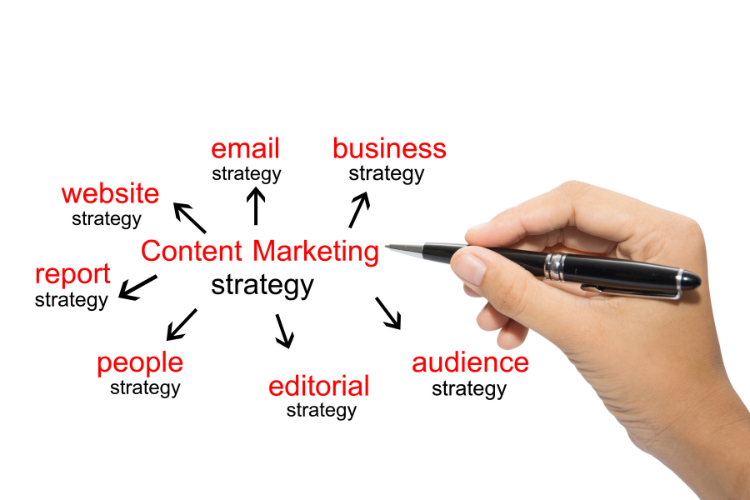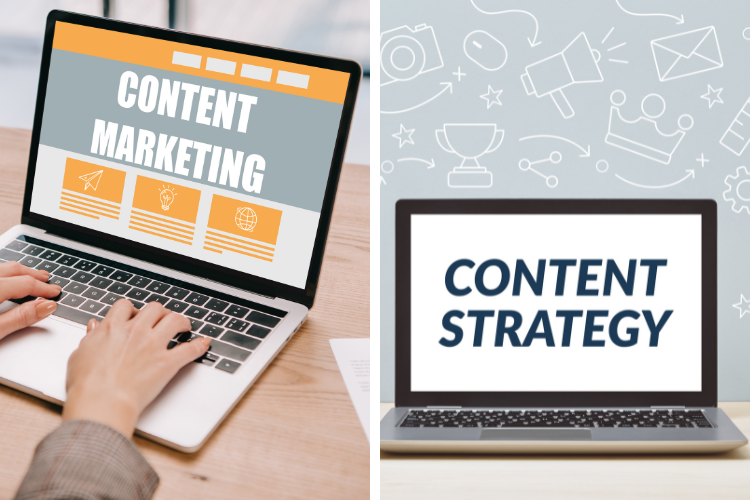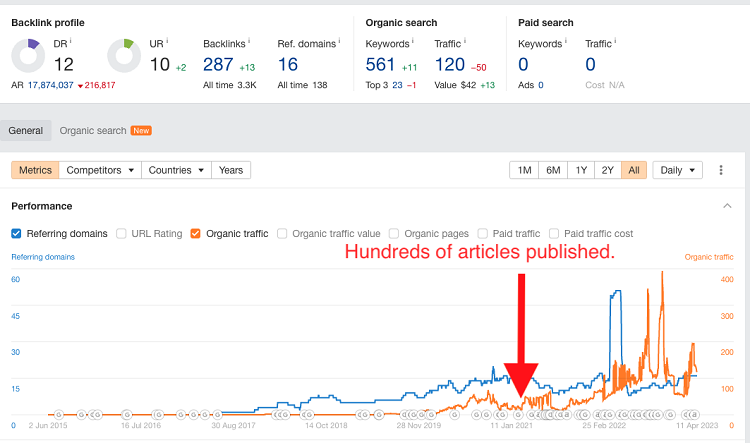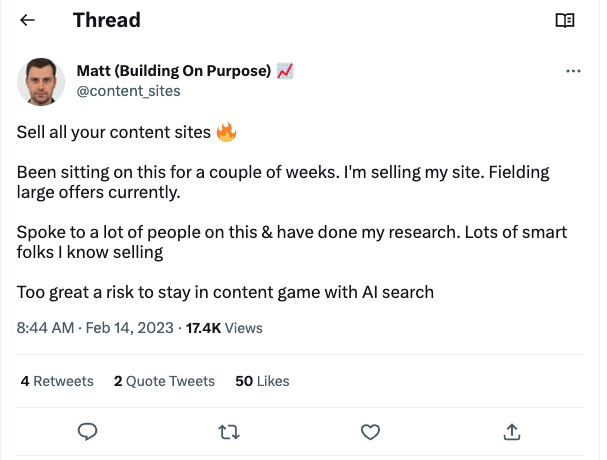- What Is Content Marketing?
- Content Marketing vs Traditional Marketing
- Content Marketing vs Content Strategy
- Content Marketing vs Content
- The Content Marketing Funnel Defined
- Content Marketing Strategies: A Breakdown and Overview
- Local Business Content Marketing
- When Should Local Businesses Invest in Content Marketing?
- When Should You Invest in Content Marketing as a SaaS Company?
- When Should I Start Email Marketing?
- Defining Content Marketing Success: The ROI of Content Marketing
- Content Forward: The Shifts in Content Marketing in the Future
- Why Content Marketing: My Final Thoughts
I’m glad you found your way to my corner of the internet to learn more about content marketing.
I’m here to help.
I’ve been in the content industry for almost two decades, and I can tell you…
When content marketing is done right, it can be the best investment for your business.
But when it goes bad, it can cost you a bundle.
We’ve seen some shifts in the past few years in our approach to content for our businesses, but I’m here to tell you (with some hopeful optimism) that there’s still a lot we can count on. Of course, the way we deliver content, the shifting goalposts for quality content, and the speed and velocity of how we distribute content continue to shift.
But, my friends. This is exciting news!
There has never been a better time to dig in and invest in content marketing for your business – If you are curious about how content marketing can help grow your business, you’ve come to the right place. Think of this guide as your starting point.
Let’s get to it!
What Is Content Marketing?

Content marketing is a strategic approach to marketing that involves creating and using content to attract, and retain specific, targeted audiences – all with the ultimate goal of getting them to do something that makes them want to spend their time with us and their money.
Most brands think more about the ‘marketing’ side of things, but great content also builds strong relationships with your current customers, builds loyalty, and can educate them to become lifelong customers.
Today’s consumers are inundated with information, in a variety of forms, and most of us know exactly when we have been ‘marketed’ to.
What makes content marketing different?
In content marketing, we meet our potential or existing customers when they are looking for information instead of blasting them with our solution or brand, hoping to get their attention.
Great content marketing serves the audience. Today, we have more opportunities than ever before to deliver our solutions, products and services to people right where they live, breathe and exist.
A great content marketing strategy always starts with thinking about the people who are going to engage with our content. Those are our peeps, and we need to deliver!
Content Marketing vs Traditional Marketing
There are going to be a lot of traditional marketers that use content marketing as a tool, but there are still some core differences between the traditional approach of marketing (broadcasting your message, casting the wide net) to a more focused content marketing approach (inviting people to your yard with valuable content that invites them in).
In the industry, you’ll hear the terms “Inbound Marketing” or “Outbound Marketing,” and content marketing is a big part of the inbound marketing crowd for sure.
For our discussion today, we will not have the time to cover all of the inbound marketing – what’s important to note here is that content marketing is a subset or part of an overall inbound strategy. If you are part of a larger organization, content marketing must work closely with the entire marketing team, but will provide more support to the Inbound Marketing team.
|
Inbound Marketing Tactics |
Outbound Marketing Tactics |
|
Blogging |
Display ads |
|
Email nurture sequences |
Cold calls |
|
Search engine optimization |
Radio and TV ads |
|
Social media strategies |
Billboards |
|
Case studies and whitepapers |
Trade show booths |
Content Marketing vs Content Strategy

When I first learned about content marketing, I often interchanged the terms content marketing and content strategy, but these are not the same. Content strategy may include a content pipeline, and strategies for content operations, and should include the big-picture strategy of how content marketing will be used.
Content marketing is part of implementing a content strategy – it’s where the rubber hits the road for the marketing side of things.
A content marketing strategy may include things such as:
- Defining the target audience
- Where and when to publish
- Deciding what topics to write about
- A comprehensive site architecture, organizing content into silos, categories, content clusters
- Figuring out where the people or traffic will come from
A content strategy may include things such as:
- Demographic and customer persona data
- Brand vision and guidelines
- Creating and deciding on a clear content mission from the start
- Goals of the larger picture (where is this strategy going?)
- Deliverables in the content marketing side of things (types of content)
There are a lot of content marketers that don’t document or even have a clear content strategy from the start, so yes, you can actually do a lot of things in content marketing without having a clear strategy.
Do I recommend this? Absolutely not.
While I am personally obsessed with creating content – going in blind (especially when there is a major budget on the line) is not recommended. Content creation and marketing can become a large investment of your time, resources, and energy from the start.
While there are always examples of creators that throw spaghetti at the wall (and do it enough) that they finally see traction – brands, and individuals that want to give themselves a fighting chance in the vast digital landscape need to have a solid content strategy in place before they start creating.
Content Marketing vs Content
There is a difference between content and content marketing. Anyone can create content: articles, videos, and social media posts. I mean, who hasn’t been down the rabbit hole of entertaining and viral content in Tik Tok? There are some highly entertaining content creators there.
Content marketing is the strategic approach to content creation and distribution with a clearly defined mission that drives the business forward. It’s not just content.
If you plan on using content for marketing your business, you cannot just create content that inspires, delights, or entertains – it must have real business ROI.
In my line of work, I get to work with some amazing content creators, and guess what? They all love to create content. Creatives don’t necessarily think about what this piece of content will do for the business; they want to create. If you are building content for your business, it must align with the buyer and customer journey.
I’ve seen this happen often when a business starts investing in content marketing, and many well-meaning newbies get caught up in the vanity metrics of content, without thinking about the real customer journey and ROI of their content.
If you are investing budget into your content marketing efforts, you need to spend quality time thinking through a content marketing strategy.
Or better yet, hire a professional that can align your business goals with a strategy that will deliver and map out content types and goals to the content marketing funnel.
The Content Marketing Funnel Defined

Content marketing professionals often talk about the content marketing funnel when creating a comprehensive strategy.
While many of us still don’t agree on what type of topics are strictly middle of the funnel, or bottom-of-funnel topics (it really depends on business types), it’s important it think about this in the early stages of your content marketing plans.
When creating a comprehensive content strategy, it’s vital to build content for each stage of the funnel. Ideally, you would map out your customer journey and provide content in each stage of the funnel:
Top of the funnel (TOP): This is the awareness stage of the funnel, where potential customers are just searching for general information. These are often broader topics and could be quite competitive (everybody covers them) but can be useful to build overall topical authority.
Middle of the funnel (MOFU): This is what we call the interest and consideration stage, where potential customers are starting to dig into real research about a product, or service and are looking for answers.
These can be lists, how-to topics, or templates that help inform and guide a buyer to the bottom-of-the-funnel content (purchasing decision).
Bottom of the funnel (BOFU): These are the money topics! These are the long-tail keywords and topics that help buyers make their purchasing decisions. These are often specific to your company and brand and can be a great place to start a content strategy.
When building a comprehensive strategy, it’s key to have topics and content in each stage of the funnel – many brands miss this and leave some big opportunities to convert and leave potential customers behind.
Content Marketing Strategies: A Breakdown and Overview
If you are crafting a content marketing strategy, think about your specific audiences. The more clarity you can have in the initial planning phase, the more effective your overall efforts will have.
This is where a lot of businesses miss the boat. They spend time and resources and publish good content, but that’s only part of the story.
There are different strategies for different types of businesses or business tactics. Here at Content Forward, we’ve broken down our content marketing strategy guides to help you:
- The Full Ecommerce Content Marketing Guide
- SaaS Content Marketing Guide
- Content Marketing for Digital Services Guide
- Local Business Content Marketing Guide
- Email Marketing Guide
I’ve worked with many types of businesses over the years and have seen a lot of missed opportunities. Here are some of the reoccurring things I’ve seen over the years, with some real client case studies:
Local Business Content Marketing
Case Study #1: Solo local business owner creates content for their blog. Publishes weekly. Consistency works, right?
I’ve seen this so many times; it makes my heart hurt because I really do love small business owners. I reached out to this particular small business owner a few years ago that started a blog for their consulting business.
Sounds like a smart plan, right? Of course, they believed that if they wrote a blog post every, single week without fail, they would grow their website traffic and soon have a valuable asset to grow their business.
Only problem was, they didn’t spend any time on their initial keyword or topic plan. They just started writing about the topics that mattered to them as the expert, without mapping out their customer journey, planning a comprehensive site plan, or thinking through the silos of content they would need to create.
They really believed that if they just started writing and publishing blog posts, that were relevant (to them), they would get traffic.
I call this the personal journal approach to blogging, and I see it a lot. I mean, they had all the raw goods – they were the expert in this line of business, and they could ramble on about these topics every week. A couple of years into this consistent blogging experience, I reached out to them.
A quick look at the Ahrefs data, and could see that they had very little traffic growth. With over 100, expertly written, long-form blog posts, surely this doesn’t add up?

I see this results like this all the time when someone comes to me saying they’ve been doing content marketing for their business, but it isn’t working. Usually, this is when a local business gives up on content marketing.
And, I get it.
A local business owner often does not have the resources to create and implement a comprehensive content marketing plan from the start, but here’s the caveat — without a solid plan and strategy, no amount of content is going to save you.
For my local business friends that want to start harnessing the power of content marketing in their business, I give them this advice to get started:
- Before publishing content, get to know your competitors and what they are doing with their content. Study the types of content they have (whitepapers, blogs, service pages, videos, newsletters) and how these assets lead people to their business. Pay attention to details as well — how is the content structured on their site? Are the blog posts long-form, or short? How are their sites organized and structured?
- Get to know your potential customers inside and out. Write down the questions new clients or customers ask you (these could be topics you write about). Build the vocabulary and ‘search terms’ that your customers use (this isn’t about you, it’s about them).
- Gather testimonials and reach out to customers to ask for reviews.
- As you are building out your business mission, service offerings, and packages — start brainstorming some topics you think you could confidently write about that connect to your business goals.
This is the raw data we can use to start creating a content marketing plan. If you are serious about investing in content marketing, now would be the time to hire a professional — someone who can organize this data and create a move-forward plan for your content.
When we work with new local businesses at Bespoke Builds (where we build bespoke content sites), we map out a few things before we start creating content:
- A comprehensive topical and keyword strategy and site plan
- Competitor analysis (through the lens of search marketing and content)
- A custom content strategy (types of content, distribution plans)
- Content operations and publishing plan
- A content mission statement (to clarify our content goals and mission)
But this is only the start! There are many factors that come into play to get relative traffic and to build content that search engines and readers can discover. It’s also important to get SEO done right from the start for your website. Without proper SEO, you are going to struggle to get people to even find your content.
If you hire a branding and web dev team, ask what they are doing for SEO. There are a lot of web dev and branding teams that don’t do enough for SEO, especially if you are going to start publishing content (and want meaningful traffic).
Effective content marketing starts with a plan, and a strategy and has clear goals on what each piece of content should accomplish. It’s not just about getting blogs published on your site.
When Should Local Businesses Invest in Content Marketing?
You may be surprised by my answer, but I don’t think local businesses should invest in a full content marketing strategy if they are just starting their business. I have actually helped a lot of friends get their first customers without a website and without any content marketing.
You can do a lot of marketing for your business before you even invest in a website. I know many local businesses that have a steady stream of clients from Facebook groups, setting up a Google Business profile, and building out their profiles on directories and sites such as LinkedIn.
The best time to invest in content marketing as a local business is after you’ve got a great product and service that is selling. So, get your first few customers and discover how you can truly help your customers before you spend time and money investing in content marketing.
SaaS Content Marketing
Case Study #2: SaaS company invests in content and goes viral for a topic that is not relevant to their product in any way. Tries to build a content strategy around the virality of one topic but wonders why they are not converting more traffic to more customers.
Virality is a good thing, right, Amy? I mean, the more views you have, the more effective your content must be! I’ve worked with a lot of clients that were hoping for virality! That one viral post could make everything better.
Well, it depends.

I spent some time working with this SaaS company. At the time, they were trying to recover their big dip in traffic. You see, they thought they hit pay dirt when they saw some massive traffic growth due to that one viral post.
They thought they could ride the wave on that one post and spent some time trying to cluster other topics that were more relevant to their audience around that particular post.
Except, this didn’t work.
The traffic they were getting (short-lived) didn’t convert to any paying customers. And, while they kept publishing posts, hoping that one post could anchor a more robust strategy, they never fully invested in a content marketing strategy that made sense to their customers and their product.
After a while, their organic traffic flatlined, and they gave up on content marketing, at least for their blog. I’ve seen this so many times. This is the famous spaghetti-at-the-wall content strategy I talk about quite a bit, with a viral twist.
In today’s search landscape, relevant topical coverage is a must-have for any content marketing strategy. Without a clear plan that maps out topical clusters of content, even a viral post won’t save the day.
Content marketing is not just about traffic, virality, or gamifying search. It should be an authentic representation of your brand, and your company and it should be something everyone in the company is proud of.
When Should You Invest in Content Marketing as a SaaS Company?
There is a ton of competition in SaaS land, new products are being built every day, so if you’ve started to think about content marketing, you are probably already late to the game.
Not to worry, though, because content marketing can easily be implemented when you’re ready and can easily scale as the budget allows. Remember, content marketing helps differentiate your brand in the marketplace and can be a real brand-building asset.
I love when startups work with content marketing pros from the start; it sets the company up for long-term success, like the team from Breadcrumbs.io who implemented a comprehensive content marketing strategy from the get-go. Even with all the Google updates, you can see how sustainable the growth is here:

Email Marketing
Case Study #3: If you build it, they will come! But what if they don’t?
A few years ago, I helped grow a pretty decent-sized email list (over 15K) in a really competitive niche (business owners).
We grew the list in a variety of ways, with clever lead capture guides, books, and classes that we poured a ton of resources into. We then spent tens of thousands of dollars on ads to get more email subscribers, and yes, our list grew quickly.
The list kept growing, but we didn’t really have a solid strategy on how to monetize the list. Worse, we didn’t really know what our list would want to buy or would buy from us when we launched a product.
We had changed the business, and the promise we were making to our subscribers with each new lead capture, with each new tactic to get more subscribers, that our email audience was a mismatch and cross-section of people we really didn’t know much about.
When it came time actually to sell something to our list, we didn’t see the conversions we expected. It was like pulling teeth to get people on board. I learned a lot from this experience, and while we did manage to rejuvenate the list and start selling, it was a tough pill to swallow for a while.
Email content marketing is a powerful tool that I strongly recommend investing fully in, but there needs to be a thoughtful strategy from the start to maximize the list’s potential. Email is where your die-hard fans and repeat buyers should live.
While there will always be some testing and pivoting in a marketing strategy, email is not the place to just start and hope for the best. List growth is only one metric and is often a vanity one.
If you are not using your email list to get to know your customers, offer them solutions, and building trust, you are just spending money on the email marketing tool of your choice.
When Should I Start Email Marketing?
If you have a website, you can start email marketing. While a brand-new site won’t have enough traffic to build a list, having an email capture or lead magnet form of some kind can signal to your audience that you plan on providing more to your audience.
If you build a valuable resource, it can also be a great authority builder as you build your brand. But don’t expect to grow a list without any significant traffic. You’ll have to invest in some paid ads if you want to grow your list without a traffic source, but that works too!
There are some great free email marketing tools you can use to get started for free. I like Mailerlite, the basic plan is free, you can build a list of up to 1000, and there are forms you can embed on your site. The editor is also really simple to use, so it’s a great tool just to get started.
At Venture 4th Media, we like to wait until we have 10,000 page views per month to start investing in email marketing, but again, that depends. We have also begun experimenting with email newsletters, which are assets that can grow on their own.
There is never a ‘wrong’ time to start building your email list. And here’s a secret nobody tells you — you don’t have to build elaborate email automation before you start building the list. You don’t even have to send a welcome email right away. You can start collecting emails and wait a bit to start sending them emails.
Most people don’t immediately check their inboxes to see the emails they are expecting. If you have a downloadable guide to send them, yes, do that, but you don’t need to spend a ton of time and resources to start building your list. You can wait to send and people will still be happy.
Ecomm Content Marketing
When I was operating my own content marketing agency, I got to work with many types of clients. One of my favorite clients was ecommerce companies, especially if they didn’t have any content marketing strategy in place.
Those companies are so fun to work with because they sell the product, and margins are often much higher than affiliate or ad-based websites. There are so many ways great content can help grow an ecomm business. If you have a product, this is your time to shine and help your potential customers, build a trusted brand, and tell the world all the great things your product can do to help.
It’s a great way to show the care and thought that went into creating your product and tell your brand’s story.
Here are some of the missed opportunities in content marketing I’ve seen when working with ecomm brands:
- Not having brand or product comparison pages in their content marketing plan.
- Giving up on their blog or resource libraries too early.
- Spending too many resources on promoting their brand and not investing in other types of helpful content.
- Smaller, new ecomm brands that try to mimic or copy what the big boys are doing.
- Overly hyped, overly positive and inauthentic brand-delivered content that does not speak to the problems, and challenges your audience is facing.
Ecomm business owners are often very proud of their brand, and their product and can ramble all day on the benefits of their product.
This is great, right? It depends.
Today’s buyers know when they are being marketed to. Customers today can see through overly positive and one-sided content plans and that’s where I see so many ecomm brands fall short. Smart brands know how to create content that not only sells the brand, but is authentic, transparent and helpful for their customers.
It doesn’t matter what type of business you have; if you are going to invest money into content marketing, you are going to have to think about the ROI of your investment from the start.
Defining Content Marketing Success: The ROI of Content Marketing

At some point, someone needs to ask about ROI. More than ever, we as content marketing professionals need to communicate the clear ROI on content – before creating the strategy, investing in the content, or building the content delivery systems.
Investing in any type of marketing will get costly quickly if there is no ROI. At Venture 4th Media, we have invested millions of dollars into content.
I know first-hand the costs of content ideation, creation, and distribution. If you are not measuring and tracking the true costs of your content marketing efforts, you could spend a lot of money quickly and not see the ROI you were expecting.
Any content strategist worth their weight will not only map out content creation and distribution costs, but will discuss and improve content efficiency over time. There is a cost to underperforming or non-performing content, and figuring out what the ‘true’ cost of content is before the investment is crucial.
There are many factors to consider when evaluating overall content performance, and many well-intended content marketing professionals miss the nuances of evaluating the true cost of a content marketing strategy.
I’ve done a few ‘clean up’ content marketing projects in my day, where a frazzled business owner has already spent xxx dollars on content but isn’t seeing the ROI. The first thing I do in these situations is to ask the owner – what do you expect your content to do for your business?
Measuring the effectiveness of your overall content marketing strategy can be a complicated process, depending on your business goals, but it’s important to keep track of some key metrics that are unique to your business.
At a very basic level, every business that invests in content marketing needs to decide:
- What metrics to track (traffic, conversions, overall topical authority and coverage)
- How to measure the content efficiency (is this content performing the way we expect it to? What is our content batting average?)
- How to make improvements (optimize, rewrite, publish new content)
- What channels are most effective for publishing (where do our customers live, breathe and move in this world?)
- To measure the true cost of content (operations, content creation, editorial + content batting average)
Deciding what to track, how to measure, and then figuring out how to make improvements are all key steps in determining the success of your content marketing efforts.
Content Forward: The Shifts in Content Marketing in the Future
We’ve made it this far in this content marketing guide and it’s time to answer the question – Is content marketing still a worthwhile investment for my business? Unless you’ve been living under a rock for the past year, you know that the digital marketing world has been going through some major shifts.
With AI technology getting better every day, overlapping Google updates, and the many algorithm platform changes, investing in content marketing can feel overwhelming and risky.
Yet, there are many amazing content marketers that are crushing it.
I believe content marketing is still one of the best investments for your business, but that doesn’t mean it’s all sunshine and rainbows moving forward, does it? I’ve been in the digital content space for a while now and these past few years have been some of the most challenging, yet rewarding years to be a part of this industry.
We’re facing a tipping point; with the rise of better AI technology, and the dynamically changing search landscape, many of us are in a holding pattern, a ‘wait and see’ where we will go from here.
And, that can be a good thing.
Gone are (forgive my overuse of this analogy) spaghetti-at-the-wall content marketing strategies that may have worked in the past.
Today’s content marketing professionals need to do more.
But there is still plenty of room for those doing it right. I mean, for years, we’ve heard the same ‘sky is falling’ rhetoric (SEO is dead!), I don’t believe it’s as dire as some would have you believe.

Great content marketing is a superpower. It’s the key to building a lasting brand that people love and want to be a part of. People want answers. They are looking for something to be a part of. They want help, and content marketing can do all of that and more. The great content marketers of the future know who their audience is and can clearly deliver that across many platforms, in an authentic, real way that makes people want to act.
Why Content Marketing: My Final Thoughts
I see such a bright future for us in content marketing, but friends, we must get even scrappier and deliver. People are no longer satisfied with wishy-washy, mediocre content not delivered by real subject matter experts.
People want content that delivers real value, is helpful and useful for their lives, and it matters who is delivering that content today because that is how you build trust.
As AI technology advances, we will face the onslaught of mediocre content. Outputs and velocity of content creation will increase, but it is my sincere belief that the gains from these experiments will be short-lived (at least in the search landscape).
Why?
It will always matter to customers and audiences WHO delivers the content.
Google has been preaching the importance of E-E-A-T (experience, expertise, authoritativeness, trustworthiness) because they are on a mission to deliver the best content results in their search results.
These content qualities are not new.
We have always wanted this from publications and brands. Yet with the ease of content publication and technology, we haven’t always gotten it.
Today we have so many options to create, scale and distribute content. Yet, we have to remember the basics of great content marketing:
- Creating an effective content strategy that clarifies the audience, and content goals
- Delivering content in the channels that matter most to our audience (meet them where they hang out)
- Creating valuable content for our audience that actually helps them on their buyer journey
- Delivering content from real experts that share authentic experiences with audiences
That’s really it, isn’t it?
If you want to invest in content marketing, I’m telling you that there are no shortcuts.
Today’s content marketing pros are going to have to do more, get scrappier, and take the time to measure what’s really working.

